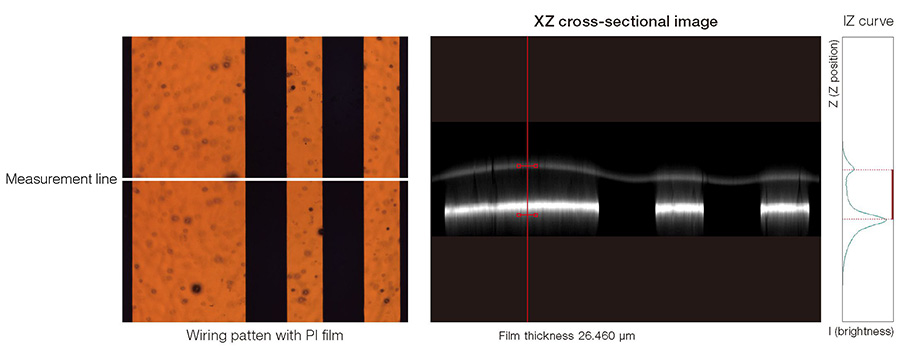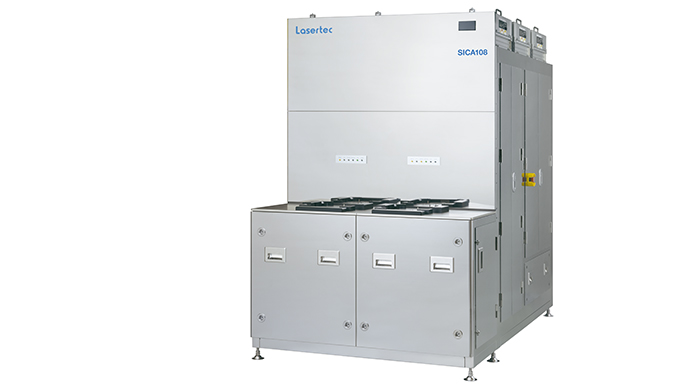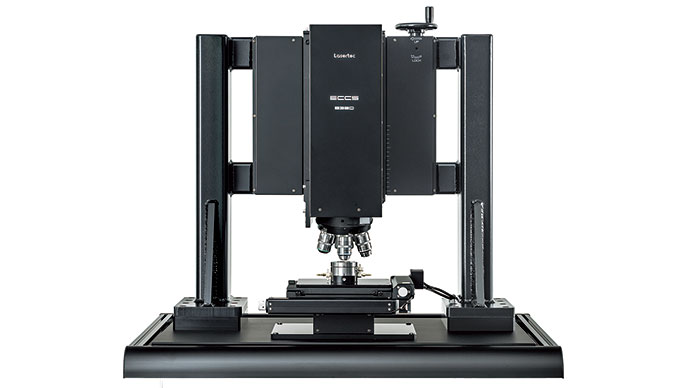Film thickness measurement
This is a function to measure the thickness of a transparent film by calculating the optical distance from its surface to its boundary with the substrate underneath. It is applicable to the measurement of more than 1µm in film thickness.
Using the example below, let us explain how film thickness measurement is performed. First, you set the measurement line parallel to the X direction. Then, you scan the sample in the Z direction and capture the reflected light from the surface of the film and from the boundary with the substrate underneath. Scan will be made on the plane formed by the X and Z axes to capture a XY cross-sectional image. The XY cross-sectional image is captured together with brightness information and therefore can be used to create an IZ curve. The peaks in the IZ curve are the locations of the film's boundaries. In the example below, the upper peak of the curve is where the surface is located, whereas the lower peak is the boundary with the substrate. Then, the optical distance between the peaks is measured. The actual film thickness is obtained after the result of optical distance measurement is corrected with refractive indexes. Since this method requires no optical model or complex calculation, it can be performed in a simple procedure.

If you use this function together with the optional function of spectroscopic reflectometry film thickness measurement, you can perform film thickness measurement in a broad range of scale from millimeters to nanometers.
You might also be interested in





